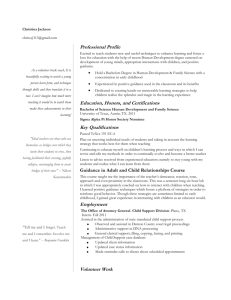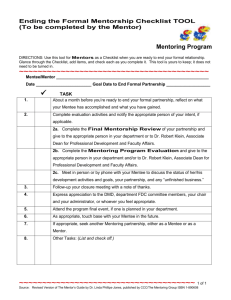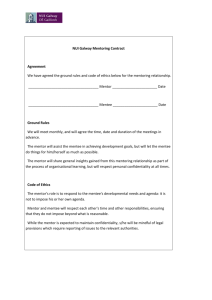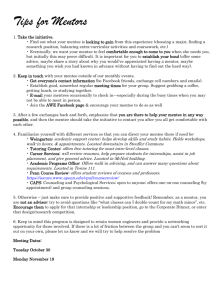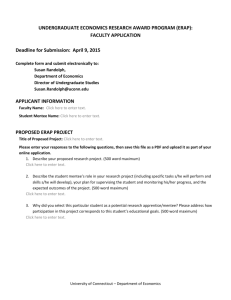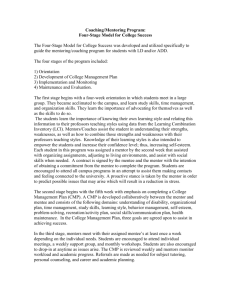Let's Take a Journey… Effective Communication
advertisement
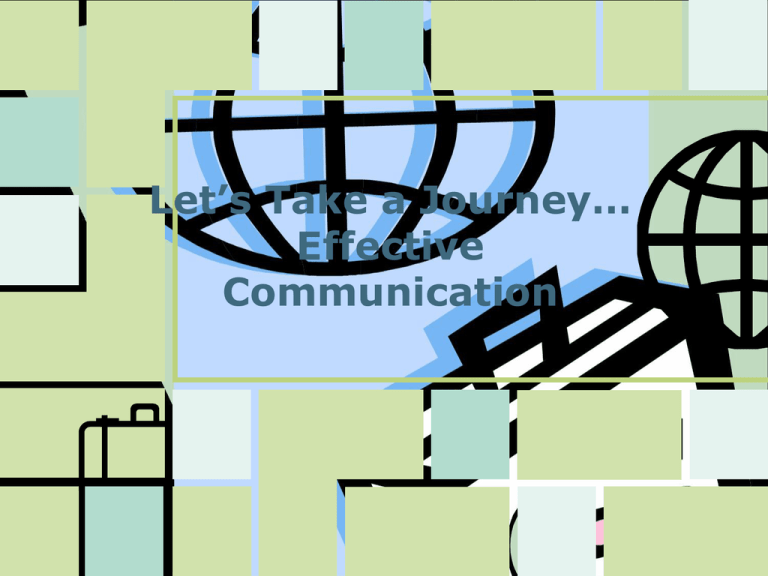
Let’s Take a Journey… Effective Communication Agenda • Introduction: What is effective communication? • Response: Communications Style Inventory/Reflection • Presentation: Skills, Phrasing and Conferencing • Response: Role Play • Action Plan: Communication Journals • Evaluation: Post Inventory What is Effective Communication: A Working Definition Effective Communication- What it’s not! • Finishing others’ sentences • Preparing our response before someone is done speaking • Multitasking while “listening”. • Filtering content or meaning based on the speaker. • Speaking for others (we…). Effective Communication: What does it look like? • Active Listening- fully present in the conversation • Positive Rapport- develop trust and sincerity • Wait Time-Not jumping into the silence Communications Style Inventory So, what’s the verdict? • If you circled the G and D, you tend toward being a Controller/Director. • If you circled the O and D, you show many qualities of a Promoter/Socializer. • If you circled the O and I, you’re predominantly a Supporter/Relater. • If you circled the G and I, you have lots of Analyzer/Thinker characteristics. Methods of Communication Face to Face Pros: • Direct • Preferred by Most People • Includes Non-verbal Cons: • More Uncomfortable with Difficult Topics • Difficult to Schedule • Reactive Responses Telephone or Voicemail Pros: • Saying it easier/quicker than writing it. • Can be done at any time. • Cell phones are everywhere! Cons: • Can be unclear/misunderstood. • No documentation. • Allows people to avoid you. Email Pros: • Communicate ANY TIME! • Provides documentation of info sent/received. • Allows for attachments. Cons: • Must know EMAIL etiquette. • No guarantee of a response. • Text only (without voice, tone and non-verbal cues) easier to misinterpret. Effective Communicators What they do…. • Reflects on what, where, when, and how to communicate . • Adjusts communication style to the developmental needs of mentee. • Respects the confidentiality of the mentor-mentee relationship. • Self-discloses one’s own professional challenges. • Models effective helping relationship skills. What they don’t do… • Do not make the conversation autobiographical. It is not about you! • Do not ask for details that are not needed to help. • Do not give the solution – try to get the person to find their own solution. Communication Skills Employed by a High-Performance Mentor • Encourages, praises, and holds high expectations for the mentee. • Projects a positive disposition toward the teaching profession. • Avoids criticism of students, parents, and colleagues. • Models personal and professional self-efficacy. • Shares own professional challenges • Models effective helping relationship skills. Conferencing Guidelines Stage One: The Pre-Observation Conference Purpose: To set goals for the observation. Tasks: • Negotiate instructional content, lesson objectives, and teaching strategies. • Target instructional behaviors to be observed. • Ask the mentee for a feedback focus-something specific they may want you to obsersve. • Establish trust and collaboration. Podsen and Denmark (2007) Stage Two: The Observation Purpose: To record observable patterns and learning. Tasks: • Record samples of behavior that relate to effective teaching behaviors. • Collect data systematically and objectively using descriptive language. • Observe for specific behaviors and their impact on the learning process. Podsen and Denmark (2007) Stage Three: Analysis and Strategy Purpose: To analyze data, identify teaching strengths and growth areas, and give feedback. Tasks: • Review the data collected. • Relate to effective teaching strategies. • Identify teaching strengths and professional growth targets. • Plan for post-observation conference. Podsen and Denmark (2007) Stage Four: Post-Observation Conference Purpose: To enable the mentee to reflect on their teaching performance. Tasks: • • • • • Establish the conference climate. Present data. Share interpretations. Encourage critical thinking. Identify teaching strengths and professional growth targets. Podsen and Denmark (2007) Developing Effective Communication Skills…The Language of Support Language of Support Paraphrasing – Letting the teacher know you hear, understand, and care. Clarifying – Letting the teacher know you hear, but you’re not sure of what you heard. Directly related to what has been said. Purpose to make information more specific and observable. Mediating – Allowing the teacher to reflect or raise awareness. Imagining – helping the teacher to think about alternatives. Paraphrasing • • • • • In other words… So, you want… First, you want to… So, you think… You have said many things… Mediating • • • • What criteria might you use….? What would it look like if? How was…different from…? How do you determine…? Clarifying • Let me see if I understand… • So, you are suggesting… • Tell me how that idea is like (or different from)… • How is your thinking now compared to when we started? Imagining • What are some strategies you might use? • To what extent might…work in your situation? • What else are you considering? Communication Barriers • • • • • • • Criticizing Name calling Diagnosing Praising Evaluatively Ordering Threatening Moralizing • Excessive questioning • Advising • Diverting • Logical argument • Reassuring • Others??? Practicing Positive Communication • Establish a relationship beyond the mentor/mentee dynamic. • Use the ‘Language of Support” when working with your mentee. • Avoid communication barriers. • Utilize a communication journal as a means for both the mentor and mentee to reflect and respond. Module Evaluation
